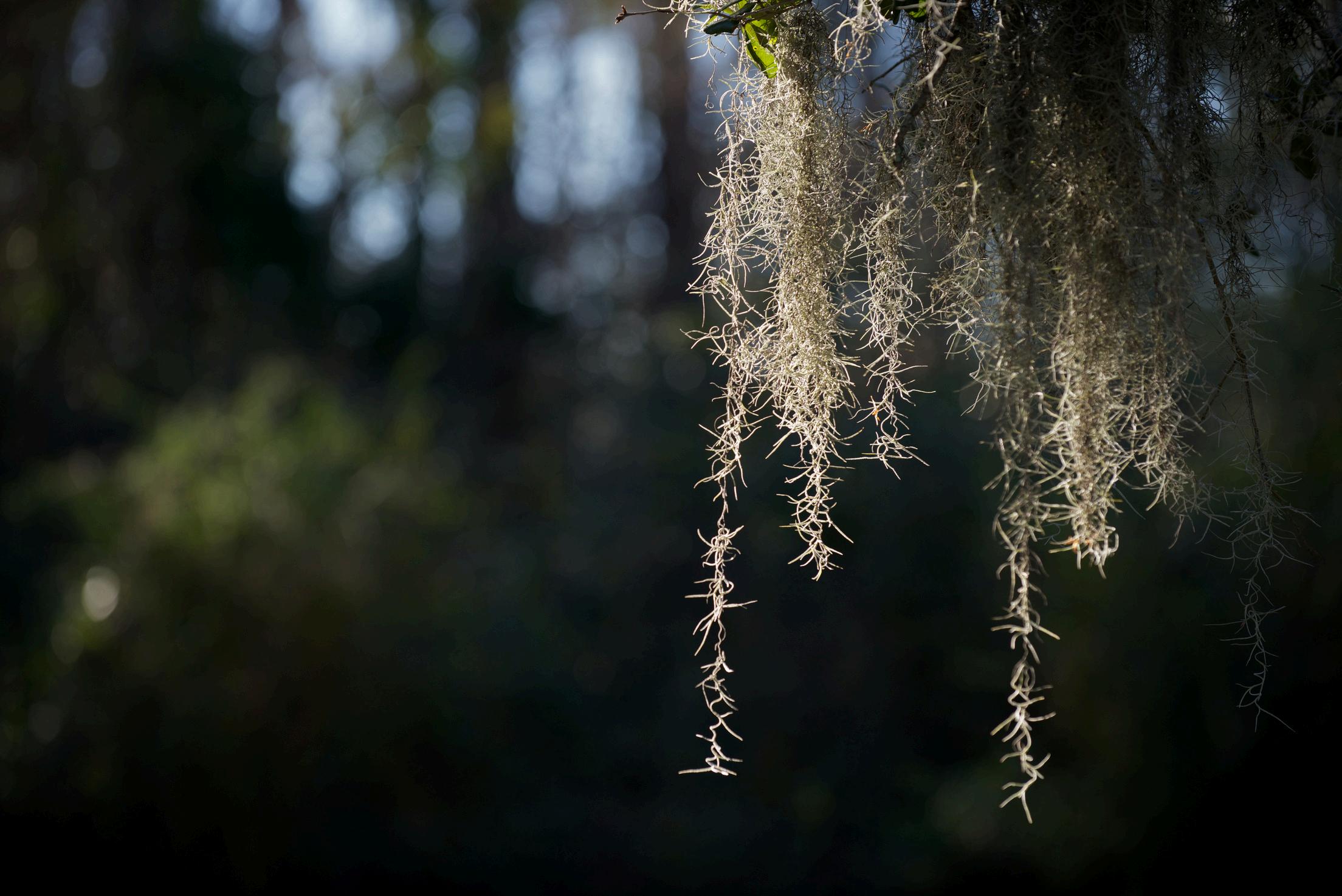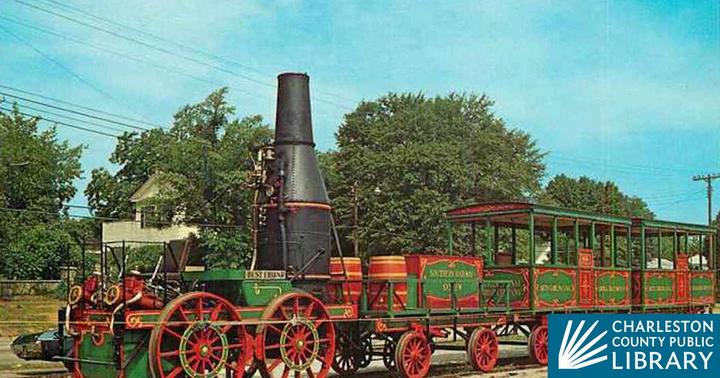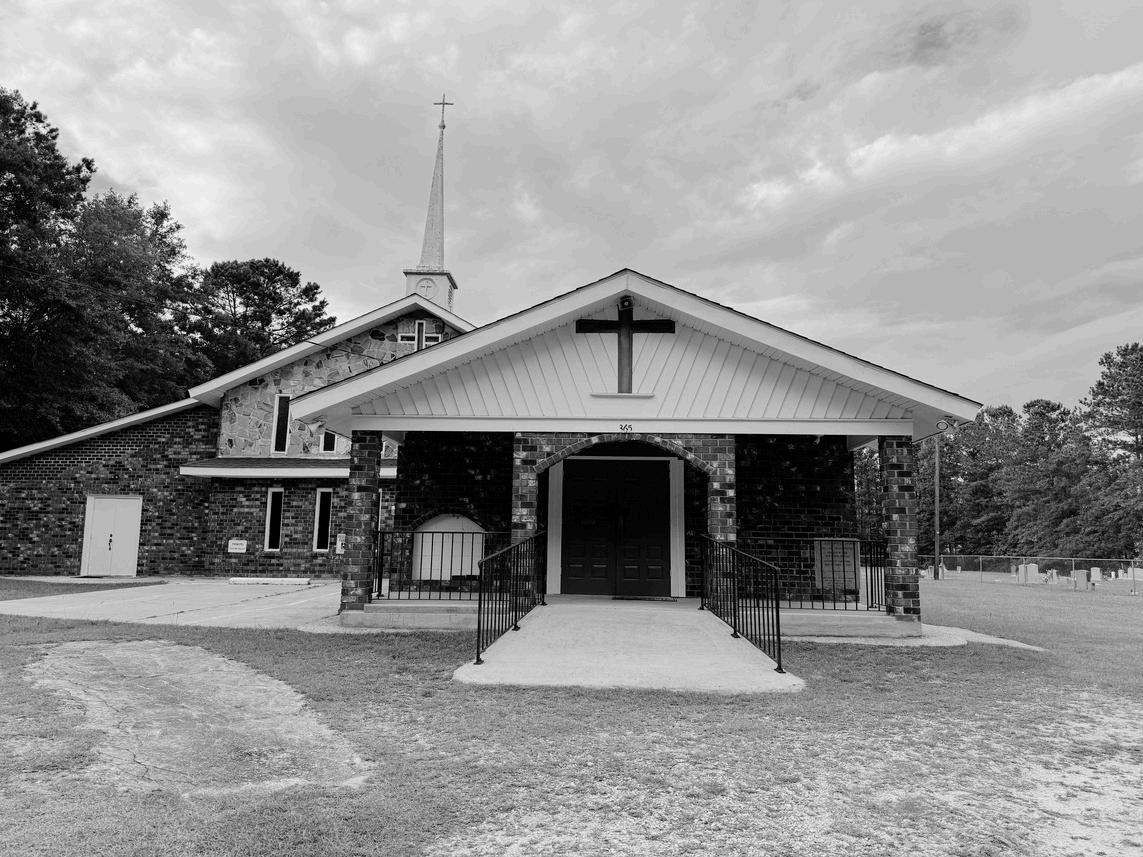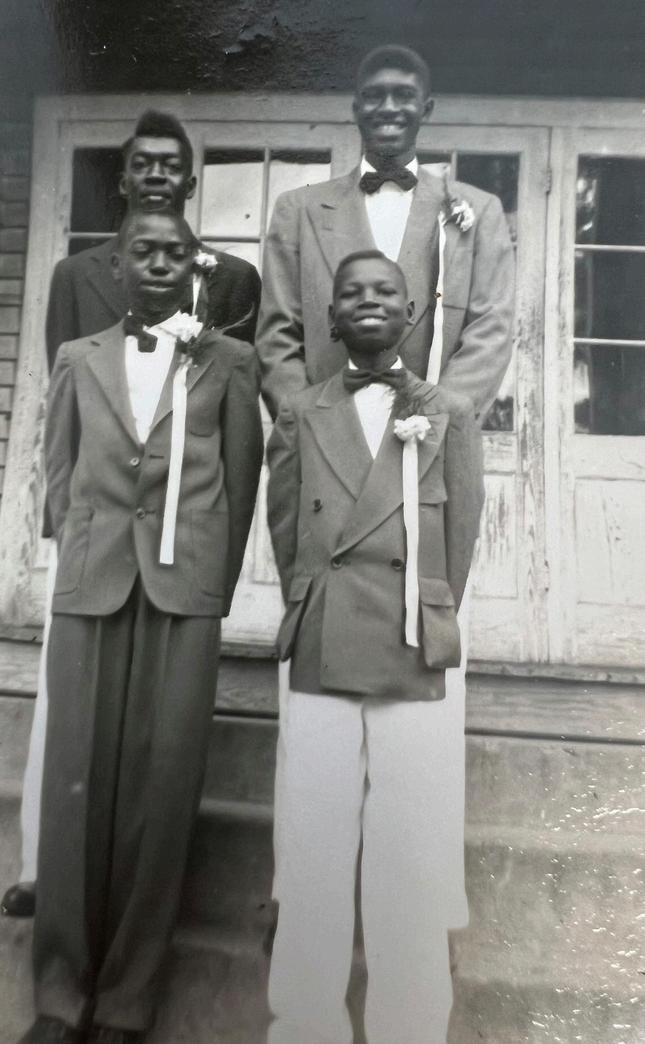




Nestled in the heart of South Carolina's Lowcountry lies Lincolnville, a town brimming with the vibrant essence of African American history and culture. Established in 1867 and officially incorporated in 1889, Lincolnville's identity is deeply rooted in faith, education, and the arts.
In 2022, Lincolnville became part of the National Park Service Reconstruction Era National Historic Network. The town remains a repository of untold stories from the pre-Civil War, Civil War, Reconstruction, and Civil Rights eras, deeply interwoven with United States, South Carolina, and Lowcountry history.
Lincolnville’s historic landmarks include three churches, cemeteries, a Rosenwald School, over 50 eligible historic homes, and wetlands. Today, the town embraces its rich heritage while building a progressive future for generations to come.


In 1833 (Pre-Civil War), The South Carolina Canal and Railway Company built the longest rail line in the world through Lincolnville. Pump Pond (the name of the area in 1833) was one of 12 water stops on the historic CharlestonHamburg Railroad line. These 136 miles of strap-iron tracks provided the first steam-powered locomotive, scheduled passenger train, and postal rail service in the United States.
Today, the residents of Lincolnville can hear the whistle of the Norfolk Southern Railway trains rolling through this historic rail corridor.



Records indicate that Black men and women began purchasing land in the Lincolnville area as early as 1865, while the Civil War raged just 20 miles away in Charleston.
In 1867, amidst the aftermath of the Civil War, Rev. Richard Harvey Cain, and six other visionaries with purchased land, christened their newfound home ‘Lincolnville’, in honor of President Abraham Lincoln—a beacon of freedom and equality in a divided nation.
Rev. Cain served in the SC Senate from 1868 – 1870 and was elected twice to the US Congress serving from 1873 to 1879. He founded Paul Quinn College in 1872, the first historical Black college in Texas. He became the 14th bishop in succession of the African Methodist Episcopal (AME) Church in 1880.

The leadership of Emanuel African Methodist Episcopal Church, in the aftermath of the Civil War, “planted” a town, 20 miles northwest of Charleston and 90 miles south of Columbia. With vision and determination, the founders and early settlers established a sanctuary of freedom and opportunity for former enslaved and free Black men, women, and children.
Following the unsuccessful slave revolt in Charleston led by Denmark Vesey in 1822, many African congregations in South Carolina were destroyed. Bishop Daniel Alexander Payne, born in Charleston in 1811 and forced to leave in 1835 for operating a school, returned in 1865 to restore and reorganized Black congregations, which had gone dormant. Daniel Payne, a premier bishop of the African Methodist Episcopal Church (AME) and the first bishop of the SC Conference, appointed Richard Harvey Cain, born in West Virginia, to become the first pastor of the reorganized and renamed congregation Emanuel AME Church.
Rev. Cain became an active abolitionist and civic rights activist and worked closely with Frederick Douglas and other abolitionists. Rev. Cain was the architect of the South Carolina Land Commission, designed to help small farmers purchase land. Recent discovered property deeds show Rev. Cain purchasing land in 1865 in the Village of Pine Ridge (now known as Lincolnville). Ebenezer AME Church located at 125 Pinckney Street was built in 1878 under the leadership of Rev. Cain.

A co-founder of the town of Lincolnville and its first mayor, Rev. Nichols was the 6th pastor of Emanuel AME Church. He completed the present day Gothic structure of the church located at 110 Calhoun Street, Charleston, in 1892. Both Rev. Nichols and his wife are entombed under the steeple of Emanuel.
One of six co-founders of the town of Lincolnville, Bishop Salters was the 4th pastor of Emanuel AME Church and the 21st bishop in succession of the AME Church.


Born 1935 in Lincolnville, Rev. Holman became the 27th pastor of Emanuel AME serving from 1978 to 1988. He rose to become a general officer and a distinguished leader in the AME Church. At the bequest of Rev. Holman, upon his death, his personal books and financial donation established Emanuel’s A. W. Holman Memorial Library.
The Town of Lincolnville was founded in 1867 and incorporated in 1887.
Rev. Lewis Ruffin Nichols
Rev. Moses Buckingham Salters
Daniel Adger
Marc Buffett
Hector Grant
Walter Steele
Rev. Lewis Rufffin Nichols
Jesse Smith
A. Tony Williams
William Washington
William Seele, Sr.
W. F. Hammond
John Godfrey
John Fennick
J.W. Albright
Pompey G. Lavally
Charles Augustus Seele
William Seele, Jr.
William Seele, Sr.
Moses Jerome Washington
William Seele, Sr.
George Clayton Mance
Clay Aiken
Charles Ross
Zelma Fielding
Charles T. Buggs
Tyrone E. Aiken
Charles Duberry
Enoch Dickerson, III
The historic churches of Lincolnville are a testament to a legacy of abiding faith in the face of adversity. Many, closely resembling their original architecture, still offer a place of worship, fellowship, and celebration for residents and visitors alike.
Lincolnville’s broad faith community and emphasis on spiritual nourishment are foundational to its culture, perseverance, and longevity.

In 1869, Rev. Cain, along with William Eden and Marc Buffett purchased land on Pinckney Street to build Lincolnville’s first church, Ebenezer AME. The building was completed in 1878 The building was remodeled in 1903 and brick veneered in the 1960s under Rev Josh Gadson.


MT ZION MISSIONARY BAPTIST CHURCH
Built in 1887 by members of Charleston's historic Centenary Methodist Episcopal Church, the building located at 735 Front Street retains its original pews and chandelier, once kerosene-lit and later converted to electricity.
Prior to building Mt. Zion Missionary Baptist Church in 1888, worshipers gathered on Sundays under a vast grape arbor, owned by Adonis Dezelle. Unfortunately, the original building of the church was destroyed by fire in the late 1960s. The congregation rebuilt the church on its original land adjacent to its cemetery also established around 1888

The Williams Graded School was built in 1899 at 135 Pinckney Street.
The first school was built by A. Tony Williams, the third mayor of Lincolnville. The land for the school was donated by Mr. Williams. Mrs. Mattie Seabrook was the first teacher at the Williams Graded School.
The building was placed on the National Register of Historic Places in 1980 and was destroyed by arson in 1982.

In 1923, a Rosenwald School was built on Board Street. The new school replaced the Williams Graded School.
As the Black segregated school in the area, a private bus company owned by civil rights activist, Esau Jenkins of Johns Island, was contracted to transport Black students from Ladson to Lincolnville for their education.
Upon completion of the 7th grade, students attended Bonds-Wilson High School on Liberty Hill. Integration of Charleston County Schools resulted in Lincolnville Elementary School closing in 1969. The original wooden Rosenwald School was remolded with brick in 1953.




Dating back to 1891, Bible Sojourn Cemetery is the Crown Jewel of Lincolnville’s history. Located off of Greenwood Street, two and a half acres were donated by its owner, Mrs. Maria S. Eden, to Ebenezer AME Church as the custodian of the cemetery. Mrs. Eden’s farm, over 40 acres, remains undeveloped today. It is an oasis of the ecosystem system of Lincolnville, which is a critical component of the Ashley River Watershed.
Over time, the cemetery was left unattended and overtaken by nature. This serene resting place of our ancestors is a beautiful garden of nature. The tombstones tell stories of veterans, family and ancestral rituals.
Maria S. Eden is believed to be buried in Bible Sojourn Cemetery.


Mt. Zion Cemetery is located on the grounds of Mt. Zion Missionary Baptist Church on Dunmeyer Hill Road. The cemetery was established when Rev. Anthony Alston founded Mt. Zion Baptist Church in 1888. Grave sites date back to the early 1800s, with over 100 souls buried there.
Recently discovered on Dunmeyer Hill Road, local archaeologists believe Hamover Circle Cemetery is the resting place of about 100 individuals over a geographic area of one acre. Initial research indicates that the site holds the stories of Lincolnville’s residents during the Pre-Civil War and Reconstruction eras, which are important to us today. Orderly rows of depressions are all that mark this sacred space. One tombstone still stands to tell the story of Mrs. Amelia Williams, the wife of A. Tony Williams, the third mayor of Lincolnville.

Located on Smith Street, one of the original structures build by the earlier settlers around 1900, the one room jail is a stucco’ed masonry building with a gabled roof and a parapet façade.
The Jail bears witness to the era in the town’s unique history when its African American citizens asserted their equal rights to governed themselves.


Located at 115 Meeting Street, the Keller Homestead was built in 1890 with decorative Folk Victorian porch details. The house is eligible for the National Registry of Historic Places by the US National Park Service.
Early Settlers, James Keller (born in 1860) and Margaret Keller (born in 1864) had 13 children, including Samuel Keller (born in Lincolnville 1891). The home remains owned and occupied by family members.
According to a recent survey, there are over 50 homes in Lincolnville which meet the requirements of a historical home, which is at least 50 years old. Dating back to the late 1800’s, four homes are prominent in the history of the town.

Born into slavery in 1836, Mrs. Riley became the first Black woman preacher in the South. She joined the AME Church under Rev. Richard Harvey Cain, Lincolnville’s
founder. Overcoming patriarchal barriers, she traveled the South preaching, teaching literacy, organizing sharecroppers, and supporting the Colored National Labor Union and Robert Brown Elliott, the first Black commanding general of South Carolina’s National Guard. She was the second Postmaster General of Lincolnville, SC.


Son of Rev. Mrs. Riley and the first Black public school principal in the U.S. In 1919, Mr. Burke led Burke High School in Charleston, founded by John L. Dart, who also had ties to Lincolnville. Both Burke High and the John L. Dart Library continue to serve Charleston today.
JOHN HENRY MCCRAY
A journalist and civil rights leader who grew up in Lincolnville. In 1941, he founded the Lighthouse and Informer,
which became South Carolina’s leading Black weekly newspaper. Its motto, “Shedding Light for a Growing Race,” underscored his challenge to the white power structure. He co-founded the Progressive Democratic Party in 1944, the first Black Democratic Party in the South. McCray, a South Carolina Journalism Hall of Fame inductee, has his manuscripts housed at the University of South Carolina.


The first African American elected to South Carolina’s House of Representatives after Reconstruction, nearly a century after Rev. Richard H. Cain’s election to Congress. Fielding spent much of his youth at his family’s Lincolnville home, which hosted key meetings for Democratic leaders, including a young Congressman James E. Clyburn, representing SC 6th congressional district in the U.S. House of Representatives.
